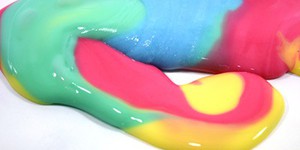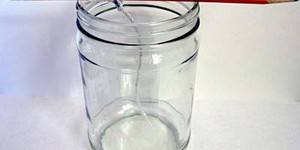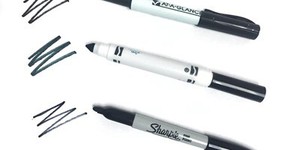Elementary School, Chemistry Science Projects (40 results)
An experienced chemistry professor used to say that it took about one explosion per week to maintain college students' attention in chemistry lectures. At that rate, we'd get in pretty big trouble with a lot of parents and teachers! Don't worry, we still have lots of bubbles, fizzes, bangs, and color changes for you to explore.
|
Select a resource
Coding Projects
Sort by
|
Watching a spacecraft launch is an amazing experience. It is thrilling to see it lift off and escape Earth's gravity. Did you know that it takes a chemical reaction to get a spacecraft into space? Every time you see a one blast off, you are watching chemistry at work. In this chemistry science fair project, you will also get to blast an object into the air. You will not be using the same fuel that NASA uses for the rockets that launch their spacecrafts; instead, you will use two simple…
Read more
If you live in a place that gets cold in the winter, you have probably seen trucks out spreading a mixture of sand and salt on the streets after a snowfall to help de-ice the road. Have you ever wondered how this works? This basic chemistry project can give you some clues.
Read more
New
Can AI understand human language? In the future, AI could aid in emergency interpretive service in the hospital when translators aren't available. But can current AI algorithms understand non-verbal languages like sign language? In this science project, you will test whether AI can learn sign language gestures or phrases to see if it can be used for interpretation.
Read more
Have you ever had a refreshing bath using a bath bomb? A bath bomb is several ingredients mixed and molded into a shape, which becomes fizzy when it touches the water. It can be quite a relaxing experience, especially if your bath bomb has a nice fragrance or includes some bath salts. The fizz is the result of a chemical reaction taking place between different ingredients within the bath bomb. In this science project, you will get to make your own homemade bath bombs and explore how changing…
Read more
"Plastic made from milk" —that certainly sounds like something made-up. If you agree, you may be
surprised to learn that in the early 20th century, milk was used to make many different plastic
ornaments —including jewelry for Queen Mary of England! In this chemistry science project, you can figure out the best recipe to make your own milk plastic (usually called casein plastic) and use it to make beads, ornaments, or other items.
Read more
Have you ever wondered how fun toys like Silly Putty®, Gak™, and Slime™ are made? These products are so much fun because of the properties of polymers, which make them delightfully bouncy, stretchy, sticky, moldable, breakable, hard, soft, and just plain fun! In this science project you can be the developer of your own slime product by changing the amount of a key ingredient. By observing the physical properties of your results, you can choose the best recipe for your new…
Read more
New
How do you feel right now? Do you remember how you felt a few hours ago? How about yesterday or last Wednesday? What if you could track your emotions throughout the day and use this information to help improve your mood and well-being? In this science project, you will program a simple, pocket-sized device that you can carry around with you to log your feelings whenever you want or on a specific schedule.
Read more
Do you filter your tap water before drinking? Many commercials claim these filters make your drinking water cleaner and safer. But what, exactly, are these filters doing, and is the water really cleaner afterward? The cleaning power comes from their filtering material, called activated carbon. It exists in various forms: powder, granules, foams, and blocks. Do you think it matters what type of activated carbon is inside the filter? In this project, you will investigate whether larger or smaller…
Read more
There are many different kinds of slime out there. Some slime is runny and liquid-like; other slime is thick and rubbery. Some slime glows in the dark, some is fluffy, and some is even magnetic! What set of properties makes the best slime? What kind of slime would you choose to make if you were selling slime as a toy in your own "slime shop"? In this project, you will experiment with different slime recipes and try to perfect one to make the best slime.
Read more
Making your own bubble solution is fun, but sometimes the bubbles don't seem to work as well as the solutions you buy in the store. In this experiment you can test if adding corn syrup or glycerin to your bubble solution will make it just as good as the stuff you can buy. This experiment will have you blowing bubbles!
Read more
Crystals come in all different shapes and sizes. However, the purest and cleanest crystals are usually also the ones that grow to be the largest in size. In this science fair project, you will compare the size and shape of crystals grown in three different temperature conditions: room temperature, in the refrigerator, and in an ice bath. With just water and borax, a household cleaning product, you can discover the best recrystallization method for growing large, pure crystals.
Read more
Have you ever looked at sunlight through a prism? If so, you know that the prism can separate the sunlight into many different colors of light — a rainbow. Like sunlight, chemical mixtures can also be broken into their component parts. One way of doing this is a simple technique called paper chromatography. What do you think you will see if you use paper chromatography to look at the components of black ink? Is black ink just black? Find out for yourself!
Read more
|


















